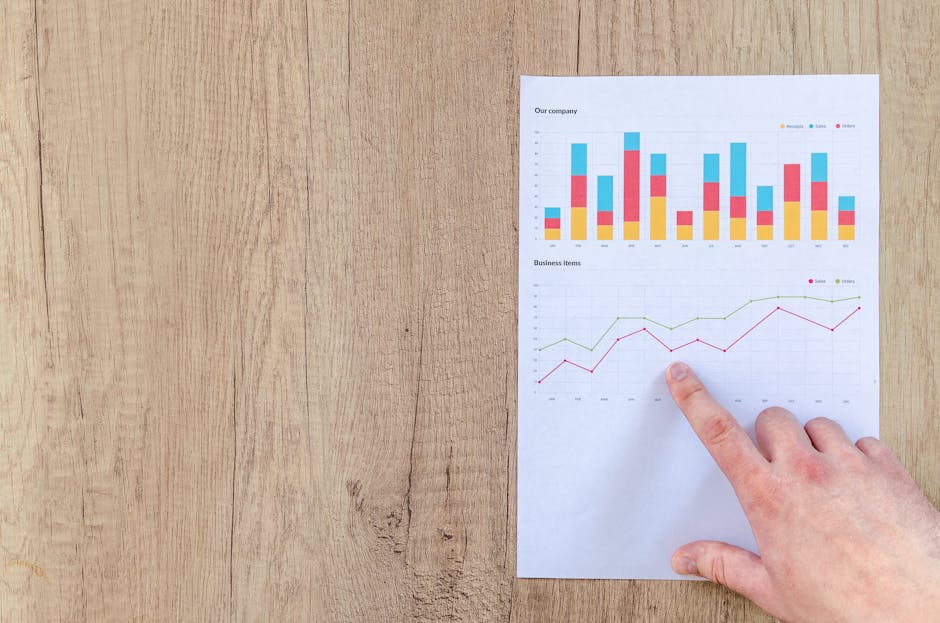Planet-Friendly Profit: Supercharge Startup Growth with Circular Economy
As the world pivots toward sustainability, startups are embracing new paradigms to bolster growth. One powerful concept at the forefront of this green revolution is the circular economy—a transformative approach that not only redefines business operations but also supercharges startup growth. If you're a small business owner looking to innovate while making a positive impact, integrating circular economy principles could be the key to unlocking your startup's full potential.
Understanding the Circular Economy
At its core, the circular economy is a systemic approach to economic development designed to benefit businesses, society, and the environment. Unlike the traditional linear economy—which follows a “take-make-dispose” model—the circular economy emphasizes the importance of reusing, recycling, and regenerating resources. This shift not only conserves natural resources but also encourages companies to innovate in ways that align with?
Can Sustainability Drive Profitability?

You might be scratching your head, wondering how going green can lead to increased profits. Well, research shows that sustainability and profitability aren’t mutually exclusive; in fact, they can be deeply interconnected. A report from the Harvard Business Review indicates that companies adopting sustainable practices often outperform their competitors financially. By minimizing waste and maximizing resource efficiency, startups can lower operational costs while building a loyal customer base eager to support eco-friendly initiatives.
Real-World Examples of Circular Economy Startups

Several startups have successfully integrated circular economy principles into their business models, setting a blueprint for others to follow:
-
Patagonia: The outdoor apparel company emphasizes repairing and recycling clothing. Their Worn Wear program encourages customers to trade in used gear, giving them credits toward future purchases. This not only fosters brand loyalty but also reduces environmental impact significantly.
-
Loop: An innovative solution in packaging, Loop partners with brands to provide reusable packaging for consumer goods, allowing items to be returned, cleaned, and reused, thus extending the product lifecycle.
-
Terracycle: This pioneering company takes hard-to-recycle waste and transforms it into new products. They partner with companies, municipalities, and individuals to eliminate the idea of waste altogether.
These examples underscore the potential for growth and differentiation in adopting circular economy practices, showing that even small changes can make a substantial difference.
How to Implement Circular Economy Principles

If you're ready to embrace circular economy principles in your startup, here’s how to begin:
1. Assess Your Supply Chain

The first step in implementing circular economy practices involves scrutinizing your supply chain. Identify areas where materials can be reused or recycled. This might involve forging relationships with suppliers who prioritize sustainable practices, or investing in technology to track materials throughout their lifecycle.
2. Design for Longevity

Product design plays a crucial role in the circular economy. When creating your products, consider how they can be designed for longevity. Incorporating durable materials that can withstand wear and tear enhances the chances of reusing or repairing them, ultimately reducing waste and fostering customer loyalty.
3. Engage Customers in Sustainability

Create programs that encourage your customers to engage in circular practices. You might start a recycling campaign, offer discounts for returned packaging, or create a customer ambassador program focused on sustainable practices. The more your customers feel involved, the more likely they are to become brand advocates.
4. Educate Your Team

Fostering a circular mindset within your team is crucial. Provide training that emphasizes the importance of sustainability and circular processes. Encourage brainstorming sessions to generate innovative ideas that promote circularity within your operations.
5. Measure and Adapt

Track the impact of your circular economy initiatives to recognize what’s working and identify areas for improvement. Key Performance Indicators (KPIs) such as waste reduction, cost savings, and customer engagement levels can provide insights to help refine your strategy continuously.
6. Collaborate with Other Brands

Consider partnering with other companies or even competitors who share your vision of sustainability. Joint ventures can lead to innovative solutions and shared resources, making it easier to implement circular practices while amplifying your impact.
The Benefits of Going Circular

Embracing a circular economy does more than just sweeten your sustainability credentials; it can also lead to numerous tangible benefits:
Elevated Brand Image

Today’s consumers are more environmentally conscious than ever—especially younger generations who prioritize sustainable brands. By adopting circular principles, you can elevate your brand image and differentiate yourself in a crowded marketplace.
Cost Savings

Circular practices often lead to significant cost savings by reducing waste and lowering material costs. For startups operating on tight budgets, every dollar counts. Recycling materials and designing for reuse can result in considerable savings in the long run.
Greater Customer Loyalty

Today’s consumers appreciate businesses that prioritize sustainability. Building a brand that resonates with eco-conscious customers can create a competitive advantage and foster long-lasting relationships.
Innovation Driver

Embracing circular economy principles often pushes businesses to innovate across their product lines and operations. As you develop sustainable solutions, you may stumble upon new offerings that can attract diverse customer segments.
Challenges to Consider

While the benefits of the circular economy are enticing, startups must also navigate several challenges:
Upfront Investments

Transitioning to circular practices often requires an upfront investment in new technologies or processes. Budgeting for these changes can be difficult, particularly for startups with limited finances.
Resource Availability

Access to recyclable materials or sustainable resources may be limited depending on your industry. Conducting thorough research and establishing strong partnerships can help overcome these obstacles.
Consumer Misunderstanding

Not all consumers are familiar with the principles of the circular economy. Educating your audience about the benefits of sustainable practices can help alleviate confusion and foster support for your initiatives.
Adding More Value Through Circularity

Utilizing circular economy principles extends beyond operational efficiency—here are additional ways to create value for your startup:
Educational Workshops
Host workshops or webinars that illuminate the principles of the circular economy for both consumers and businesses. Empowering others with knowledge enhances your reputation as a thought leader and expands your network.
Leverage Technology
Technological advancements can facilitate your transition to circular economy practices. Utilize software that tracks resources or online platforms that connect businesses with sustainable suppliers.
Appeal to Millennials and Gen Z
These generations are known for championing social causes and sustainability. Craft your marketing messages to resonate with their values and preferences—a strong narrative around your sustainability efforts can drive engagement and sales.
Final Thoughts: Embrace the Circular Future
As you navigate your startup journey, integrating circular economy principles offers a remarkable opportunity for growth while simultaneously benefiting our planet. By tailoring your strategies to encompass sustainability, you position your startup not just as a business but as a movement toward a healthier, greener world.
If you're keen to explore more growth strategies that can amplify your startup’s presence, delve into related articles like the power of unique audio branding and digital minimalism for growth. By leveraging these innovative ideas, your startup can thrive in both profitability and purpose.




